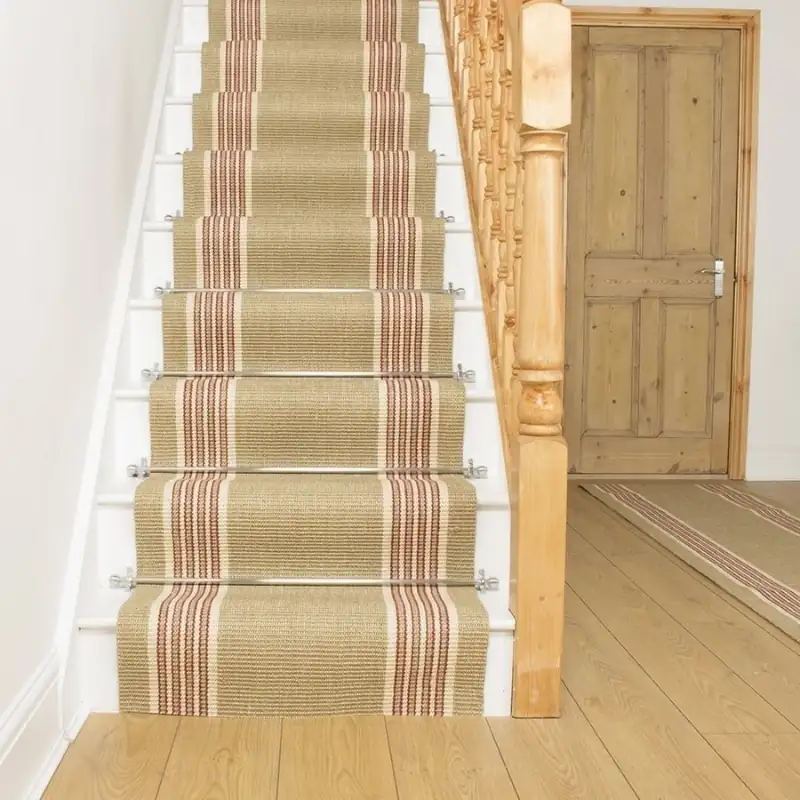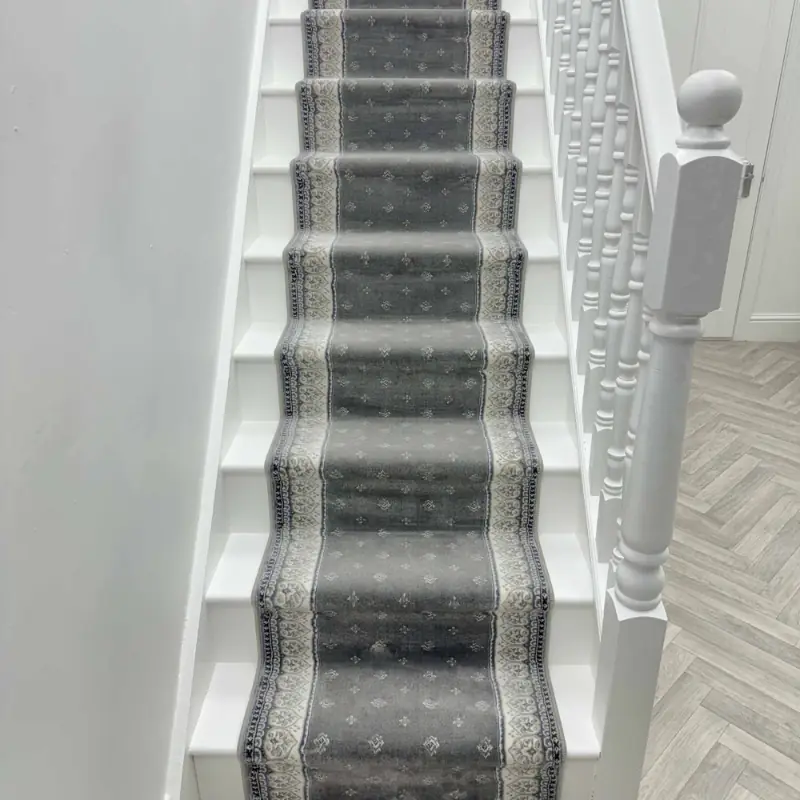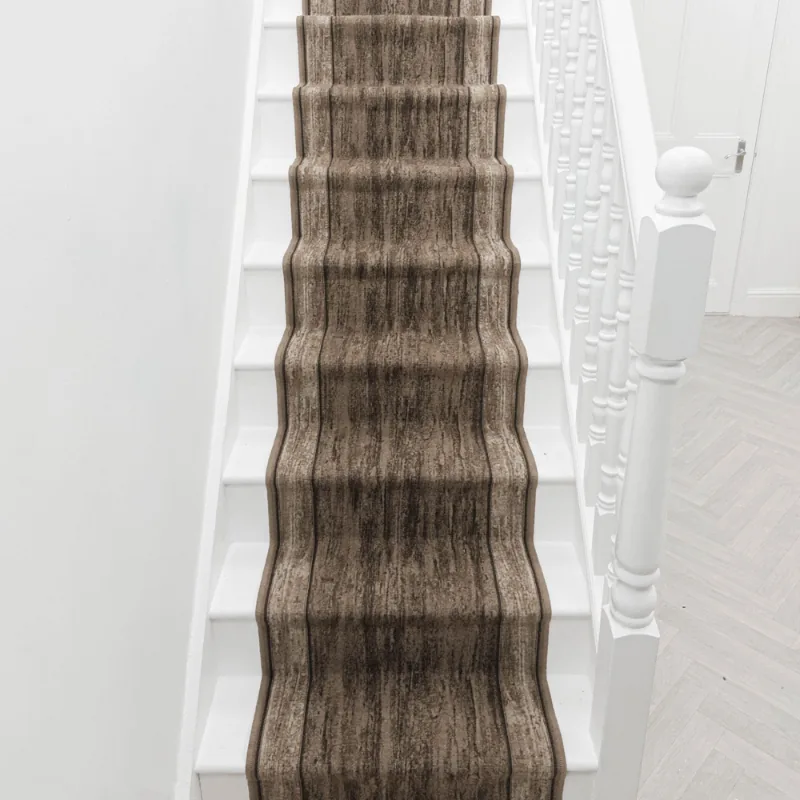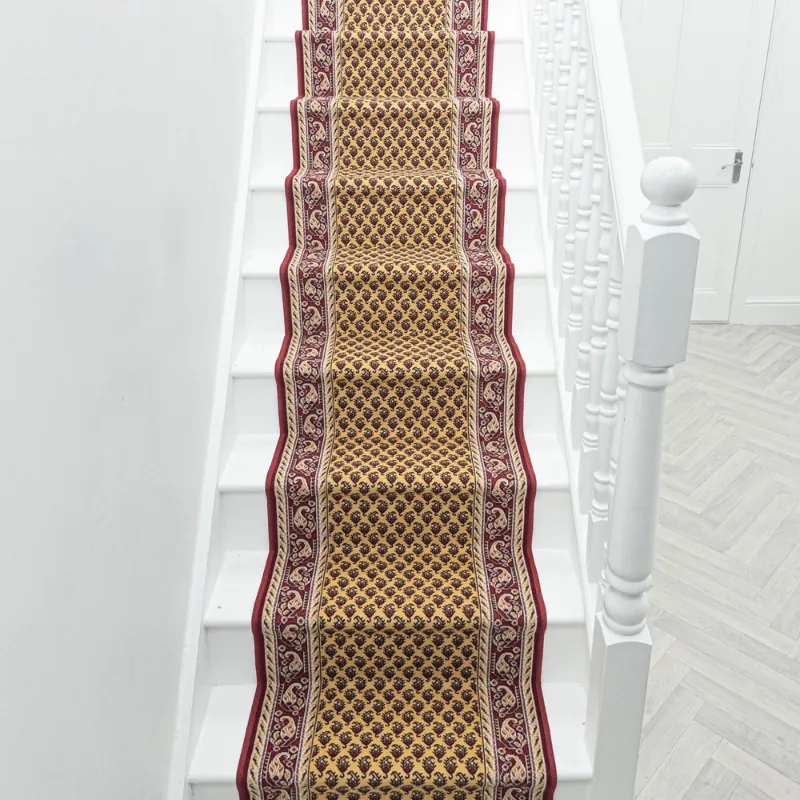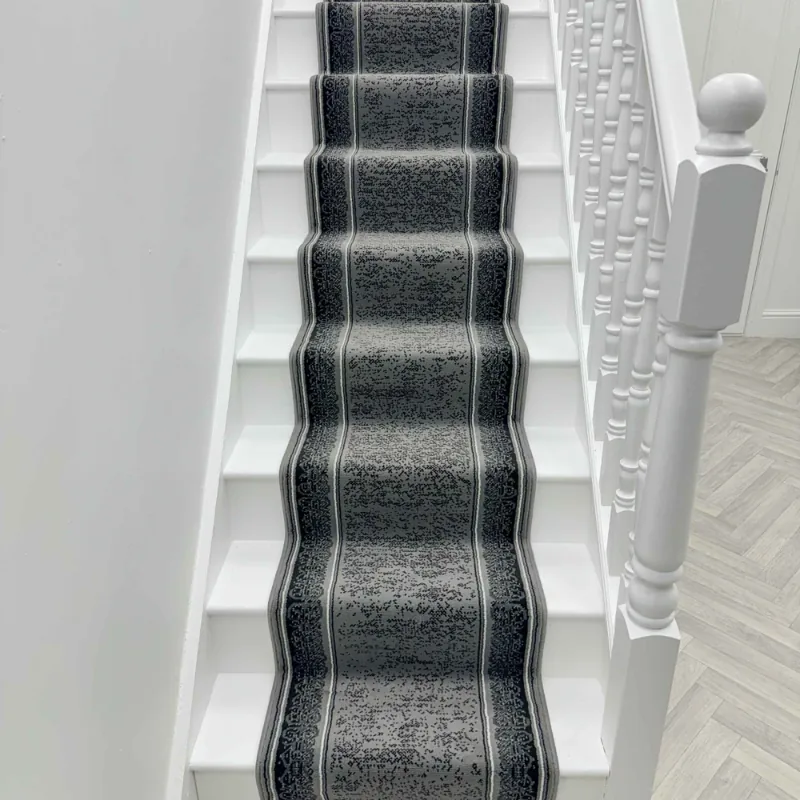The Amesbury Stone Tape Stair Runner brings a clean and calm feel to your stairs. Its soft texture and 5mm thickness make every step comfortable, while the strong woven backing keeps it secure and steady. The light stone colour adds a fresh and modern look that performs well with many home styles.
Whether you have a bright, open area or a cosy hallway, this runner carpet fits right in everywhere. This Stair carpet is made with care and built to last, making it a smart option for everyday use in busy UAE homes. Easy to maintain and stylish without being too bold, it’s a great way to refresh your staircase in Dubai.
| Feature | Description |
|---|---|
| Thickness | 5 mm |
| Material | 100% Polypropylene |
| Backing | Woven / Hessian |
| Texture | Soft & Comfortable |










